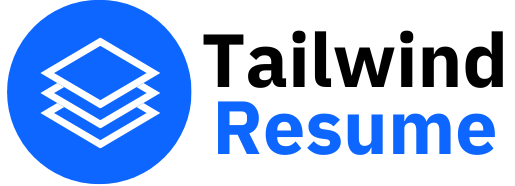Advanced Resume Content - Work Experience and Beyond
Work Experience
For experienced professionals, the work experience section is the most crucial part of your resume. For recent graduates, this section will focus on internships and relevant project work. Let’s break down how to present this information effectively.
Format and Structure
- List experiences in reverse chronological order (most recent first)
- Group by company, including position, company name, location, and duration
- Organize projects or teams within each company as sub-sections
- For those with extensive experience (10+ years) or multiple positions, focus on the most recent and relevant roles. Highlight your last 5 positions at most, or reduce details from older positions to maintain focus on current expertise.
Here’s an example format from one of our templates:

Content and Impact
The details of each position are crucial - this is where your resume can truly shine. When describing your projects, focus on your personal impact and quantifiable results. LinkedIn recommends a formula: “Accomplished {impact} as measured by {number} by doing {specific contribution}.”
While you don’t need to follow this formula exactly, try to convey similar information in your own words.
Key points for work experience descriptions:
- Never fabricate information. I’ve seen candidates struggle to explain their listed projects or technologies during interviews, which creates a very poor impression.
- Organize by project, prioritizing your most impactful work first. We call these your star projects. When describing them, consider:
- Briefly outline the technology stack used
- Include quantifiable metrics to demonstrate impact when possible
- Add links to live projects where applicable
- For complex technical implementations, consider linking to detailed blog posts or documentation
Here are two examples:
Example 1: Frontend Lead Role
TailwindResume https://tailwindresume.co
Lead Frontend Developer, responsible for architecture and team technical direction. Developed a low-code platform for creating and sharing technical resumes, consisting of three main components:
- Editor: Single-page application built with React + TypeScript + Next.js 14, enabling visual resume creation through a low-code interface
- Template System: Component library built with React Server Components + TypeScript + Tailwind CSS, packaged with Turbopack, supporting streaming SSR and progressive enhancement
- Global State: Shared data service using TypeScript + Tanstack Query + Zustand, managing consistent data structures across frontend applications, backend services, and template system
Example 2: Performance Optimization
TailwindResume https://tailwindresume.co
Frontend Developer, focused on application performance optimization:
- Reduced bundle size from *KB to *KB using Turbopack and RSC (React Server Components) optimization techniques. Implemented partial hydration and streaming for improved initial load. Details: blog.tailwindresume.co/turbopack
- Improved Time to First Byte (TTFB) from * seconds to * seconds through Edge Runtime deployment, static/dynamic hybrid rendering, and HTTP/3 implementation. Details: blog.tailwindresume.co/edge-optimization
- Achieved % reduction in annual compute costs by implementing incremental static regeneration (ISR) and leveraging Vercel’s Edge Network, resulting in $ savings.
Technical Skills
The technical skills section is vital for developers. While some skills are evident in your work experience, this section provides a clear overview of your technical capabilities.
Common Mistakes to Avoid:
- Don’t use progress bars to indicate skill levels. These arbitrary percentages don’t meaningfully convey your expertise level.
- Avoid using the term expert. Few engineers truly reach this level, and using it might invite more challenging questions during interviews. Instead, use terms like proficient, experienced, familiar with, or working knowledge.
- Don’t list technologies you’ve only briefly encountered. Many candidates list technologies they’ve only used in “Hello World” projects, leading to awkward interview situations when they can’t answer basic questions.
Format and Content
You can present skills in two formats:
- Tag-style: Simple and clear, listing key skills (limit to 15 most important ones):

- Detailed format: Group skills by category (e.g., JavaScript, CSS, Node.js) with specific frameworks and tools listed under each:
-
JavaScript (ES6) / TypeScript Development
- Vue3 ecosystem: Vite, Vue-Router, Pinia, Element-Plus
- React ecosystem: Next.js, React Router, Redux
-
CSS3 and Related Tools
- Tailwind CSS and Bootstrap 5
- Sass and PostCSS preprocessors
-
Build Tools and Performance Optimization
- Webpack and Rollup configuration
- Frontend performance optimization experience
-
Node.js Backend Development
- Express.js + TypeScript with ecosystem plugins
- MongoDB for database, Redis for caching
- CI/CD with GitHub Actions and Docker
Education
The education section’s importance varies with experience:
- For experienced professionals (3+ years), keep it brief - just school, degree, major, and dates
- For recent graduates, include relevant coursework, activities, and achievements
Additional Sections
Beyond standard sections, consider adding these elements to showcase your expertise, especially if you have significant personal projects:
Personal Projects
Like GitHub projects mentioned earlier, highlight your most impactful work:
Project Name Brief description including purpose, tech stack, and GitHub stars if applicable.
Technical Writing
If you regularly publish technical content, include your best articles:
-
Medium Article: Understanding Webpack Plugin Architecture
-
Dev.to Post: MongoDB Database Design Best Practices
Speaking Engagements
If you’ve presented at conferences or meetups, list notable presentations:
-
Company Tech Talk: ESBuild Quick Start Guide
-
JSConf 2023: Node.js Production Best Practices
Resume Examples
TailwindResume offers quality resume examples for various tech roles:

